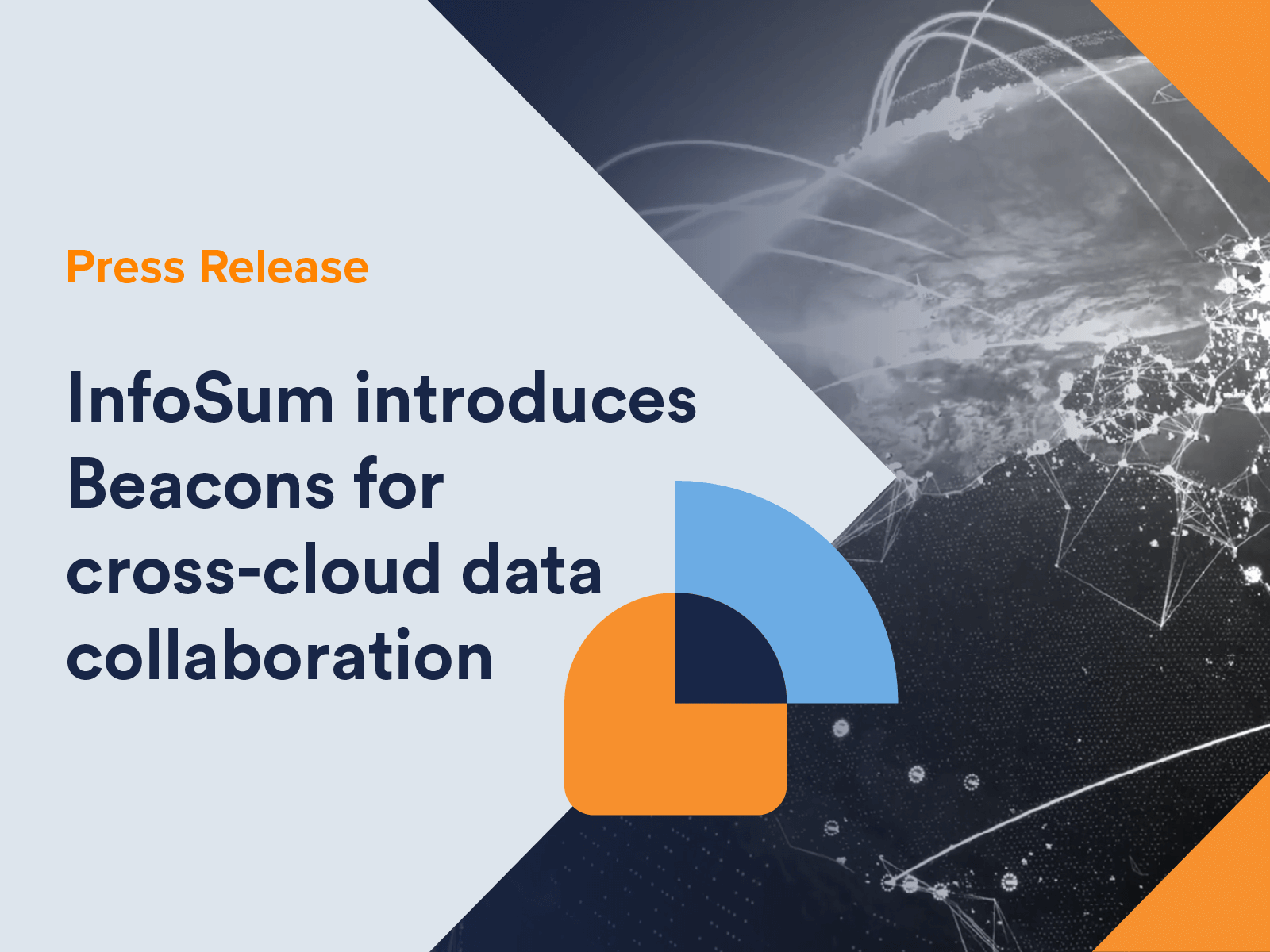What is addressability?
An addressable audience, or simply addressability, refers to the number of individuals a media company has access to that can potentially be reached through an advertising campaign.
In a pre-digital era, addressability was achieved through mailing lists, powered by data provided by Royal Mail in the UK, and the US Postal Service. As email grew in popularity in the 90s, mailing lists took their first step towards being digital, with postal addresses replaced with email addresses.
However, with the explosion of the internet in the late 90s, and the rise of social media in the 00s, advertisers became increasingly reliant on programmatic advertising. This created an ‘adtech boom’, with multiple new platforms coming to market that could track and target individuals through the use of third-party cookies, acting as a proxy for identity. These platforms used third-party cookies to create large addressable audiences for brands and media owners alike and for use cases such as re-targeting.
However, these audiences were often ‘unknown’, meaning there was little to no declared data from the individual, such as their email or name, and instead, the platforms mainly relied on inferred data such as context or behavior.
With the abolishment of third-party cookies looming and increased scrutiny from regulators, the advertising industry is increasingly seeking to power their advertising efforts with ‘known audiences’, achieved through a combination of identity and first-party data. This enables advertisers to personalize the messaging and optimize the relevance of their ads to serve the right ad, at the right time, to the right person.
What are the benefits of known addressable audiences?
Facebook and Google have dominated the digital advertising space for over a decade, due in part to the extensive addressable audience that advertisers can target at a one-to-one level (a.k.a people-based marketing). While the walled gardens have proven the formula for success, other media owners are now growing their own addressable audience and providing value to advertisers.
Display
Digital advertising, especially where delivered through programmatic methods, requires a media owner or publisher to have an audience that can be targeted through advertising. Meaning the media owner or publisher must have a unique identifier associated with each individual, whether it be an email, cookie, mobile ID, or another method. This audience can then be made available to brands to target using the demographic and behavioral attributes that are collected.
For the media owner, providing a large known audience that can be targeted by advertisers to deliver personalized advertising, enables them to provide a viable alternative to the walled gardens of Facebook, Google, and Amazon. However, many media owners are just at the start of their journey from an unknown to known audience; implementing paywall and registration layers, encouraged by premium content, newsletters, and the ability to comment on articles.

Audio
The rise of music streaming services such as Spotify, Pandora, and Apple Music, as well as the increased popularity of podcasts, have seen new known audiences emerge through audio streaming. Spotify, as an example, requires every user of its service to log in using an email address. This provides them with a unique identifier for every individual using their streaming service.
Spotify’s addressable audience, however, is the over 100 million users who take advantage of the free service, in exchange for being targeted with advertising. This addressable audience can then be targeted by brands using the various demographic and behavioral attributes that Spotify collects in their first-party data.

Connected TV/OTT
With over 1 billion Smart TVs and OTT devices in the world, the addressable audiences that are available through these platforms are considerable. While traditional TV advertising has been a mainstay in the marketing mix for some time now, CTV/OTT and other VOD services provide a new opportunity for personalization and targeting.
As more and more broadcasters create their own streaming services, the vast majority require individuals to sign-up with an email address to access their content. This means these broadcasters are building up an impressive known audience base. This audience can then be made available to brands to target in their marketing campaigns based on the behavioral and demographic data collected by each broadcaster, and for retargeting, using the brands CRM data to target their known audiences directly on CTV/OTT platforms.

What are the challenges of addressability?
In the digital and programmatic space, addressability has previously been achieved through the use of third-party tracking techniques, such as third-party cookies, or more opaque methods such as fingerprinting.
Third-party IDs, such as cookies, have historically been used as a proxy for identity. While this provided tracking and targeting capabilities, the accuracy of these IDs have always been quite unreliable. A common example of this unreliability is the same individual being treated as several different users when viewing the same website but switching between devices or browsers. As such, third-party cookies often created a disjointed view of a user leading to irrelevant advertising or content being shown to them.
Additionally, with an increase in regulatory compliance, and browsers moving to block these third-party IDs, brands, publishers, media agencies, and the myriad adtech vendors between, need to replace these soon-to-be outmoded approaches.
Approaches to addressability
Third-party cookies
As we’ve covered, third-party cookies have traditionally been used as a proxy for identity, to power an addressable audience. As these IDs can be dropped on both an advertiser and a publisher web property and held in a third-party environment, they allow an individual to be targeted by advertisers across multiple publishers.
While this approach created a common ID to aid addressability between advertisers and publishers, it did so in a way that consumers struggled to understand and offered little control. Regulators have also highlighted the lack of transparency and understanding around third-party cookies to be an issue. In particular the daisy-chaining of consent often occurred between platforms sharing third-party IDs.
The major browsers have all determined in recent months that this approach didn’t protect consumer privacy and therefore started to phase out support for third-party cookies. Apple was the first to make this change, implementing Intelligent Tracking Prevention in their Safari browser in 2017. They were quickly followed by Mozilla and Microsoft in their Firefox and Edge browsers, and then finally Google announced in 2020 they would follow suit, setting a final deadline of 2023.

Universal IDs
With the demise of third-party cookies, Universal IDs have been touted as an alternative to tracking and targeting consumers across the web. As these IDs are delivered in a first-party environment, many have considered them a more future-proof way to collect identity information.
There are essentially two styles of Universal IDs, each with its own challenges. The first is a probabilistic Universal ID. These combine some first-party data with additional user behavior clues such as the browser used, favorite websites, as well as the screen resolution and download speeds on the accessing device, to stitch together a user profile. This can then, probably, identify that same non-logged-in user across different devices and browsers. This type of approach is commonly referred to as Device Fingerprinting. Fingerprinting is carried out in a non-transparent way, and as such, all three of the major browsers have committed to blocking this.
The second style of Universal ID is deterministic. These work in a similar way to third-party cookies, except the cookie, is first-party (meaning it’s placed by the owner of the website). These first-party cookies are then able to track the user’s behavior on that site. However, they do not provide cross-site functionality as they are tied to the domain of the website owner. To achieve data portability, the IDs and their associated data are shared in some way with the third-party Universal ID provider. The provider is then able to build an identity graph using this data. But this centralization of data still creates significant privacy and security challenges, as well as resulting in limited visibility into the process for the data subject.
There is an alternative approach that makes the use of deterministic Universal IDs much more privacy-safe, and that is to utilize a decentralized or federated approach to identity, which enables the data to remain with the party that collected the data.

PII (email, mobile ID, etc.)
The third and final approach to creating an addressable audience is through the collection of PII data, such as email addresses or mobile IDs. As we covered above, streaming services (both audio and video) have demonstrated the ability to create a vast known audience through a simple sign-up requirement. Outside of these two forms of media, we’re seeing other media owners taking similar steps. Many publishers are increasingly putting content behind a sign-up wall. This allows them to associate all behavior and demographic attributes with that user.
This addressable known audience can then be made available for brands and media agencies to match customers and potential customers against to build an audience segment. However, given the sensitivity of PII data, it would not be acceptable to share this data with a third party to create connectivity between data sets. Therefore, it is vital that a decentralized or federated approach is taken.
Connectivity, however, is not the only challenge; the second challenge is scale. We have seen how other forms of media have created significant audiences by putting content behind a login. However, publishers are slightly behind the curve in this approach, and therefore must take action immediately to begin collecting this valuable first-party data.
How to get started with addressability
In the cookie-free world, addressability will become reliant on the move from unknown to known audiences. For media owners, this journey can be achieved through the production of premium content behind a login wall that justifies the user providing their email address to the media owner.
With this unique identifier provided, publishers can begin building a picture of their audience underpinned by behavioral and demographic data. This addressable known audience can then be made available to advertisers to power people-based marketing campaigns.
For advertisers to take full advantage of these new addressable audiences, they too need to build up their first-party data assets. We are already seeing an increased focus on collecting transactional data and tying this data to a user account and persuading prospective customers to sign-up for newsletters and offers.
However, given the trust the consumer has provided both media owners and brands in handing over their email addresses, it is absolutely vital they protect this data. The first step in doing so is to not share this valuable data with a third party.
InfoSum’s approach to addressability
InfoSum supports addressability by providing a privacy-secure environment to connect first-party data between brands and the media owner. InfoSum’s non-movement of data approach means each party’s data remains decentralized in their own controlled environment, known as a Bunker. The owner of the Bunker can then enable another party to conduct analysis against their data to unlock insight and create audience segments. Importantly, this all happens without sharing or moving raw data.

This unique approach enables media owners to make their addressable audience available for brands to analyze and measure overlap between their customers and the known audience data. Audience affinity and potential reach can then be accurately measured.
Importantly, InfoSum utilizes cutting-edge differential privacy techniques that ensure no individual in either the brand’s or media owner’s data is ever identified. All results of the analysis are provided at an aggregate statistical level, where various differential privacy techniques have been applied to ensure individuals can not be singled out through analysis.
The advertiser can create their ideal audience using the demographic and behavioral attributes in the data sources. This segment can then be flagged for direct activation by the media owner. Because of the patented approach, InfoSum takes, neither the publisher nor the advertiser have to share their data with the other to achieve activation.







